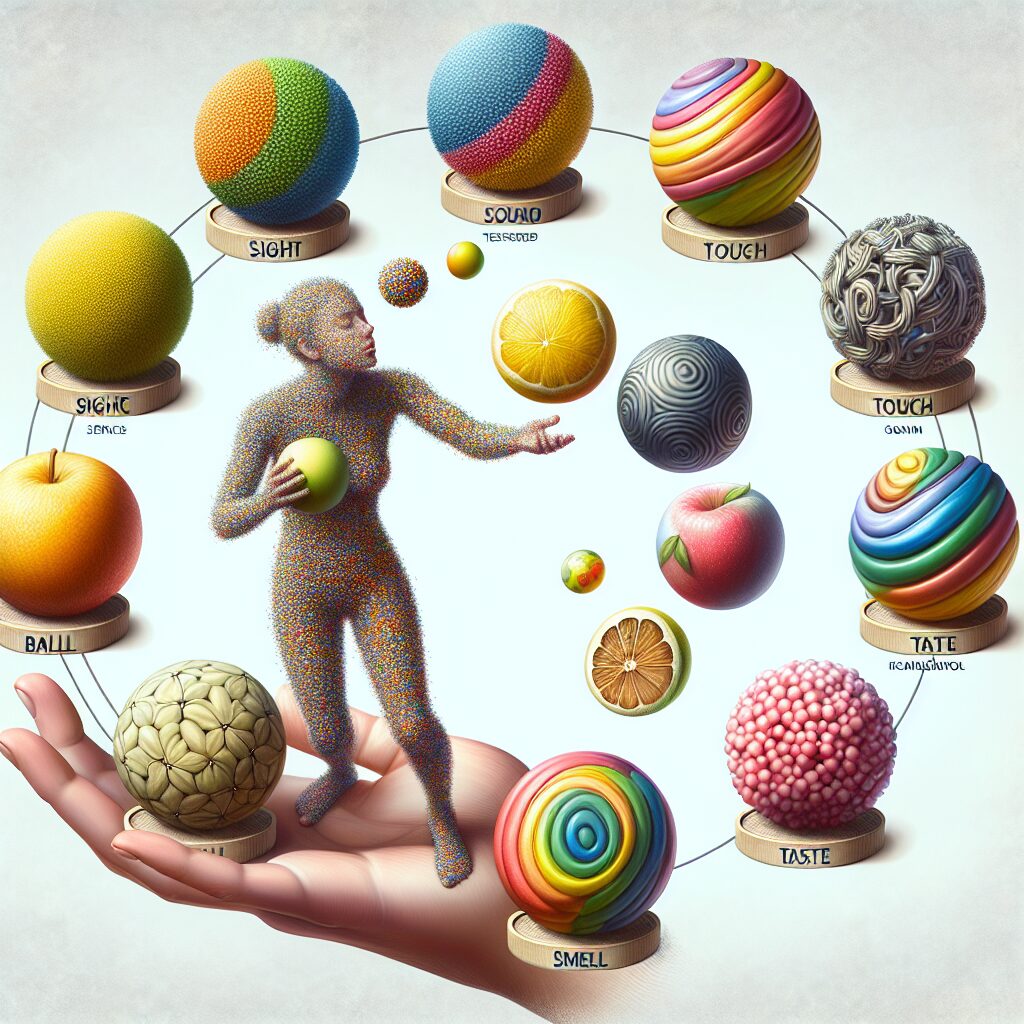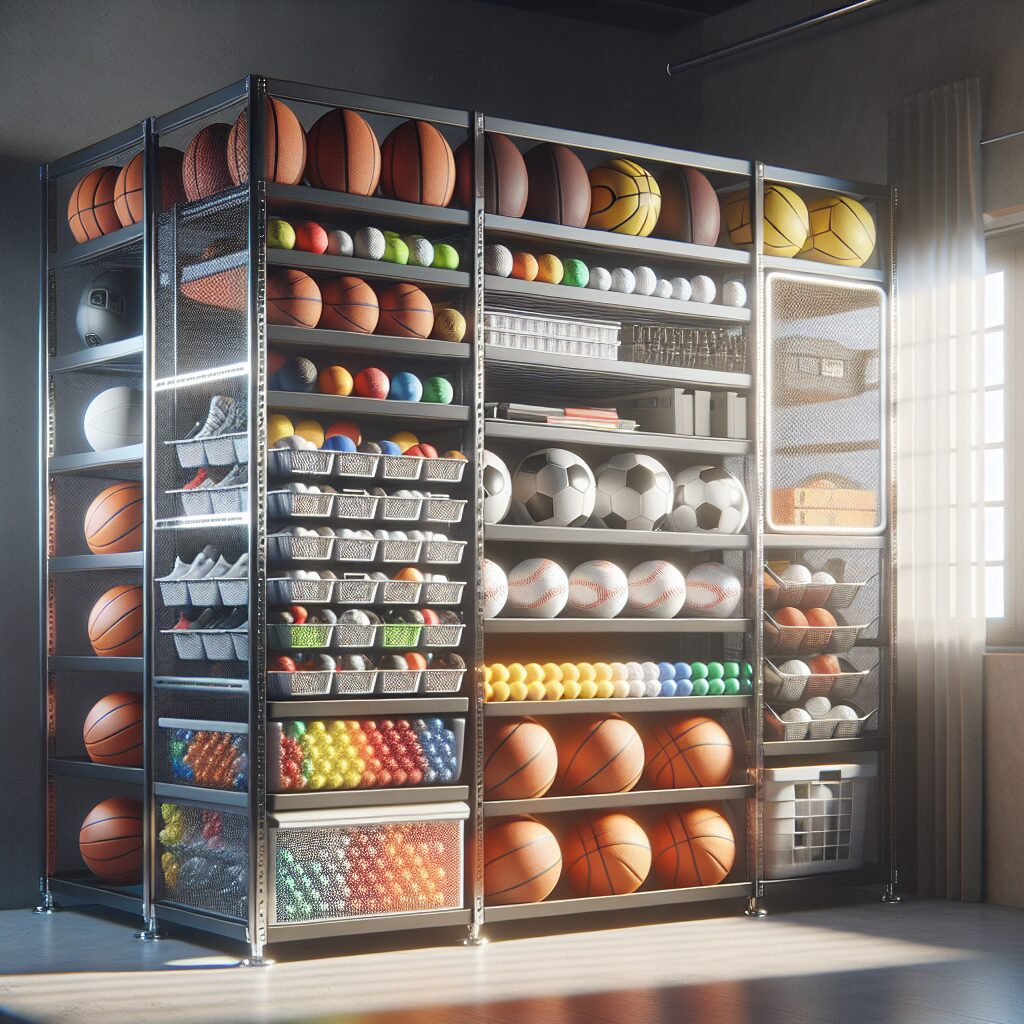Sensory integration refers to the brain’s ability to process and organize sensory information from various sources, such as sight, sound, touch, and movement, in order to produce appropriate responses. One unique fact about sensory integration is that it plays a crucial role in our daily lives, impacting our ability to learn, communicate, and interact with our environment effectively. Balancing the senses is essential for individuals with sensory processing difficulties, as it allows them to better regulate their responses to sensory stimuli.
When it comes to sensory integration, the use of balls can have a significant impact. Balls provide a multi-sensory experience, engaging the visual, tactile, and proprioceptive senses. The bright colors and different textures of balls stimulate the visual and tactile senses, while the act of throwing, catching, or bouncing the ball provides proprioceptive input, which helps individuals with sensory processing difficulties improve their body awareness and coordination. Moreover, using balls in sensory activities can be highly motivating and enjoyable for individuals of all ages, making it an effective tool for therapy and learning.
In the next section of this article, we will explore some key takeaways related to sensory integration with balls. We will discuss specific activities and exercises that can be done using balls to improve sensory integration skills. Additionally, we will delve into the benefits of incorporating ball-play into therapy sessions or educational settings. So, let’s dive in and discover the exciting world of sensory integration with balls!
Key Takeaways
1. Sensory integration with balls involves using various types of balls to improve sensory processing and integration skills for individuals with sensory processing disorders.
2. The use of balls in sensory integration therapy can help with proprioceptive, vestibular, and tactile sensory needs by providing a range of movement and tactile experiences.
3. Different types of balls, such as therapy balls, weighted balls, and textured balls, can be used for specific sensory needs and goals, such as improving motor coordination, balance, and body awareness.
4. Sensory integration with balls can be implemented through various activities, such as bouncing, rolling, throwing, catching, and kicking, promoting sensory exploration and engagement.
5. Regular participation in sensory integration activities with balls can help individuals develop better sensory regulation, body awareness, and motor skills, contributing to improved overall sensory functioning and participation in daily activities.
How Can Sensory Integration with Balls Help Balance the Senses?
What is Sensory Integration?
Sensory integration is the process by which the brain organizes and makes sense of the information it receives from the senses. It is crucial for individuals to have a well-balanced sensory system as it affects their ability to learn, focus, and interact with their environment.
The Role of Balls in Sensory Integration
Balls play a significant role in sensory integration therapy. They provide a variety of sensory input, stimulating different senses such as touch, proprioception, and vestibular senses. The use of balls in therapy helps individuals regulate their sensory experiences, improve coordination, and enhance overall body awareness.
1. Tactile Stimulation
When engaging with balls, individuals experience tactile stimulation through touch. The different textures, sizes, and shapes of balls provide diverse tactile sensations, which can have a calming or alerting effect on the sensory system. This stimulation aids in improving tactile processing and sensitivity.
2. Proprioceptive Input
Bouncing, squeezing, or throwing balls provides deep pressure and proprioceptive input to the muscles and joints. This input helps individuals better understand where their body is in space and improves body awareness. It also aids in coordination, balance, and motor planning.
3. Vestibular Stimulation
The vestibular system, which is responsible for balance and spatial orientation, is stimulated through activities involving balls. Rolling, bouncing, or spinning on balls can provoke vestibular input, challenging the individual’s sense of balance and promoting its development.
Using Balls for Sensory Integration
1. Sensory Integration Therapy Sessions
Qualified therapists often incorporate balls into sensory integration therapy sessions. These sessions involve engaging in activities that challenge the individual’s sensory processing abilities while interacting with different types of balls, facilitating improved sensory integration and regulation.
2. Ball-Based Games and Activities
Balls can be incorporated into daily routines and playtime activities to support sensory integration. Playing catch, bouncing on an exercise ball, or participating in ball-based sports encourage the development of sensory integration skills while providing fun and engaging experiences.
3. Ball Pit Therapy
Ball pit therapy involves immersing oneself in a pool filled with plastic balls. This activity provides a multitude of sensory input, allowing individuals to experience tactile, proprioceptive, and vestibular stimulation simultaneously. It can help in calming sensory-seeking individuals while encouraging exploration and regulation.
Expert Tips for Sensory Integration with Balls
- Ensure balls have various textures, sizes, and densities to offer a wide range of sensory input.
- Encourage supervised ball play in safe environments to prevent accidents or injuries.
- Adapt the activities to the individual’s sensory needs and preferences, allowing them to feel comfortable and engaged.
- Gradually increase the complexity of ball-based tasks to challenge and enhance sensory integration skills.
- Consider using visual cues or prompts to assist individuals in tracking and interacting with balls.
- Observe and respond to the individual’s reactions to determine the optimal level of sensory input for them.
- Be patient and allow individuals to explore and engage with the balls at their own pace.
Frequently Asked Questions
1. What is sensory integration?
Sensory integration is the process by which the brain organizes and makes sense of the information received through the senses. It helps individuals effectively respond to and interact with their environment.
2. How do balls help with sensory integration?
Balls are widely used in sensory integration therapy as they provide various tactile sensations, enhance proprioceptive input, and promote motor skills development. They can help individuals improve their balance, coordination, and sensory processing abilities.
3. What are the benefits of sensory integration with balls?
Engaging in sensory integration activities with balls can lead to improved attention, concentration, body awareness, and self-regulation. It can also enhance motor planning, sensory discrimination, and overall sensory processing abilities.
4. Who can benefit from sensory integration with balls?
Sensory integration with balls can benefit individuals of all ages and abilities. It is particularly beneficial for individuals with sensory processing disorders, autism spectrum disorder, attention deficit hyperactivity disorder (ADHD), developmental delays, and balance or coordination difficulties.
5. How can I incorporate sensory integration with balls at home?
You can incorporate sensory integration with balls at home by engaging in activities such as rolling, catching, throwing, or bouncing balls. You can also create obstacle courses or use inflatable balls for sensory stimulation.
6. Are there any safety precautions to consider when using balls for sensory integration?
Yes, it is important to ensure a safe environment when using balls for sensory integration. Use balls that are appropriate for the age and developmental level of the individual. Always supervise the activity to prevent accidents or injuries.
7. How often should sensory integration with balls be done?
The frequency of sensory integration activities with balls depends on the individual’s needs and preferences. It is recommended to incorporate these activities into daily routines, aiming for at least 20-30 minutes per day.
8. Where can I find resources or tools for sensory integration with balls?
There are various online resources, websites, and professional therapist recommendations available for sensory integration with balls. You can also consult occupational therapists or special education professionals for guidance and suggestions.
9. Can sensory integration with balls be done in a classroom or therapy setting?
Absolutely! Many classrooms and therapy settings incorporate sensory integration with balls as part of their curriculum or therapeutic interventions. It helps create a stimulating and engaging learning environment while supporting sensory development.
10. Are there any other sensory integration techniques besides using balls?
Yes, sensory integration includes a wide range of techniques and activities beyond using balls. These can include swinging, jumping, deep pressure activities, tactile experiences, and oral motor exercises. What works best depends on the individual’s specific sensory needs and preferences.
Final Thoughts: Sensory Integration with Balls
Sensory integration with balls offers a fun and effective way to support the development of sensory processing and motor skills. By engaging in enjoyable activities with balls, individuals can enhance their ability to process sensory information, improve attention and body awareness, and foster self-regulation. Whether at home, in a classroom, or during therapy sessions, the versatility of sensory integration with balls makes it accessible for individuals of all ages and abilities.
Remember, when incorporating sensory integration with balls, always prioritize safety and match the activities to the individual’s needs. Seeking guidance from professionals and utilizing available resources can further enhance the benefits of sensory integration with balls. So, grab a ball and start balancing the senses!




